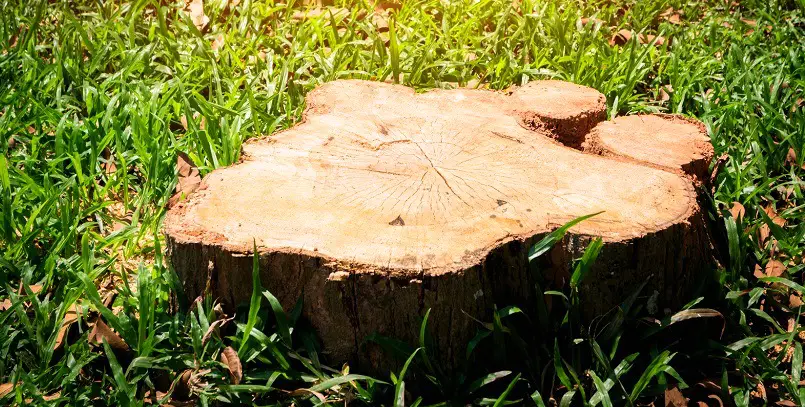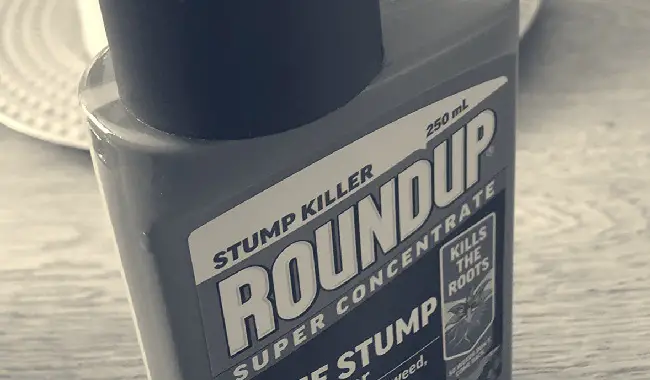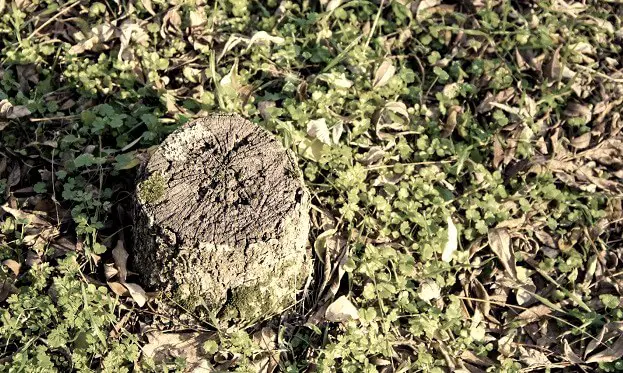Tordon vs Roundup Tree Killer

Gardening and landscaping often necessitate the removal of unwanted vegetation, including weeds, trees, and stumps. When it comes to tackling such tasks, products like Tordon and Roundup come to the rescue.
Both are well-known weed and tree killers, each with its strengths and distinctive features. This article will compare Tordon and Roundup to help you decide which product best suits your needs.
Tordon vs Roundup Table
This comparison table will help you to understand the difference between those two product.
Tordon | Roundup |
 | |
The active ingredients in Tordon RTU are 2,4-D, triisopropanolamine salt 20.9% and Picloram, triisopropanolamine salt 5.4%. | Roundup is a glyphosate-based product. |
It includes a blue dye that helps users easily keep track of treated stumps | Allowing replanting within 48 hours after application. |
Tordon RTU keeps more than 20 woody species at bay by translocating into the tree's root | It can kill up to 16 tree stumps with a single bottle |
It is Ideal as a liquid tree stump killer treatment | It kills stumps from the root, preventing regrowth. |
Coverage area of 5,000 sq. ft. for maximum power | A 250 ml concentrate which can make up to 25 liters of solution. |
Tordon RTU comes in a ready-to-use 1 qt. container. | Capable of working on stumps up to 45 cm in diameter |
Tordon RTU formulation requires no mixing or measuring and can be used almost year-round. | This product is formulated to degrade in soil via microorganisms |
Can be use in the in forest and non-crop areas such as fence rows, roadsides, and rights-of-way. | Approved for use all around the garden, on gravel areas, paths, drives and along fences. |
Effective against various woody plants, including ailanthus, alder, aspen, birch, cedar, cherry, dogwood, elm, firs, and more. | Effective against stubborn plants like brambles, nettles, bracken, Japanese knotweed, and ground elder. |
Top Similarity
- Both are herbicides intended to kill unwanted vegetation, including tree stumps and woody weeds.
- They both translocate throughout the plant system, ensuring thorough extermination of the target plants.
- Both can be used almost year-round for managing vegetation in various non-crop areas like paths, drives, fence lines, etc.
- Both are designed for long-lasting results, with actions targeted at the root system to prevent regrowth.
Active Ingredients
Tordon RTU contains 2,4-D and Picloram, both in the form of triisopropanolamine salt. These are two types of synthetic auxin hormones which cause uncontrolled growth in plants, eventually killing them.
The particular percentages (20.9% for 2,4-D and 5.4% for Picloram) indicate a higher concentration of these active ingredients in the formulation, which is likely a significant factor in its effectiveness.
Roundup Tree Stump & Root Killer is a glyphosate-based herbicide. Glyphosate is a broad-spectrum systemic herbicide that works by inhibiting an enzyme that plants need to survive. It’s very effective on a wide variety of plant types, hence its widespread use.

Formulation
Tordon RTU’s ready-to-use formulation eliminates the need for the user to mix or measure, which makes it simpler to use and reduces the chance of user error in mixing. This convenience can save time and resources.
Conversely, Roundup comes as a super-concentrated solution that users must dilute before application. Although this requires an extra step, it allows for a greater volume of usable product from a smaller amount of concentrate, which can be more economical over large areas.
Application
The application of Tordon RTU involves pouring the product into a squirt bottle applicator, which can be more straightforward and user-friendly, particularly for non-professional users.
Roundup, on the other hand, is typically applied directly to the roots or into drill holes in tree stumps using a reusable pipette. This precise application method may lead to more effective eradication of the target plants, especially in the case of stubborn species, though it could be seen as more labor-intensive.
Visual Tracking
Tordon RTU has a blue dye incorporated in the formulation which serves as an indicator, allowing users to easily track the areas or stumps that have been treated. This feature can be helpful to ensure full coverage and avoid repeated application to the same area.

This visual aid is not present in the Roundup product, which means users need to carefully remember or mark where they’ve applied the product.
Environmental Impact
Roundup has an eco-friendly aspect to its formulation in that it degrades in soil via microorganisms, and replanting in the treated area is possible just 48 hours after application. This means the product has a shorter environmental half-life and can be considered less harmful to non-target organisms.
Tordon RTU doesn’t make a specific claim about its environmental impact in terms of degradation and safe replanting times. This may imply that the product has a longer environmental half-life, or that the impact on non-target organisms is greater.
Packaging
Tordon RTU’s packaging of a 1 qt. container claims to cover about 5,000 sq. ft., which may be sufficient for smaller, domestic projects or localized infestations.
Roundup, on the other hand, is sold as a 250 ml concentrate that can make up to 25 liters of solution. This may make it a more cost-effective option for larger areas or more extensive infestations.
Target Pests
Both products are effective against a wide range of plant species, but each has its specific targets. Tordon RTU is particularly effective against species such as ailanthus, alder, aspen, which may be common nuisance species in certain geographic areas.
Roundup is especially potent against stubborn plants like brambles, nettles, bracken, and Japanese knotweed. If these species are the primary concern, Roundup might be a more suitable choice.
Our Observation
Based on the above comparison, each herbicide has its strengths. Roundup Tree Stump & Root Killer’s glyphosate-based formula, ability to degrade in soil quickly, and the option for precise application make it an eco-friendlier option and potent against stubborn plants.
Its concentration also suggests it may offer better value for extensive infestations. On the other hand, Tordon RTU stands out with its ready-to-use formulation, reducing the chance for user error and saving time. Its inclusion of a blue dye for visual tracking enhances application accuracy.
However, its environmental impact is less clear than ROUNDUP’s. For general ease of use, Tordon RTU may be more suitable, but for eco-conscious consumers dealing with hardy plants, ROUNDUP may be the preferred choice.
Related Article

James E. Butkovich, Pest control maven with a knack for eco-friendly & Chemical solutions. Blogger with a mission to make homes pest-free, one post at a time.
